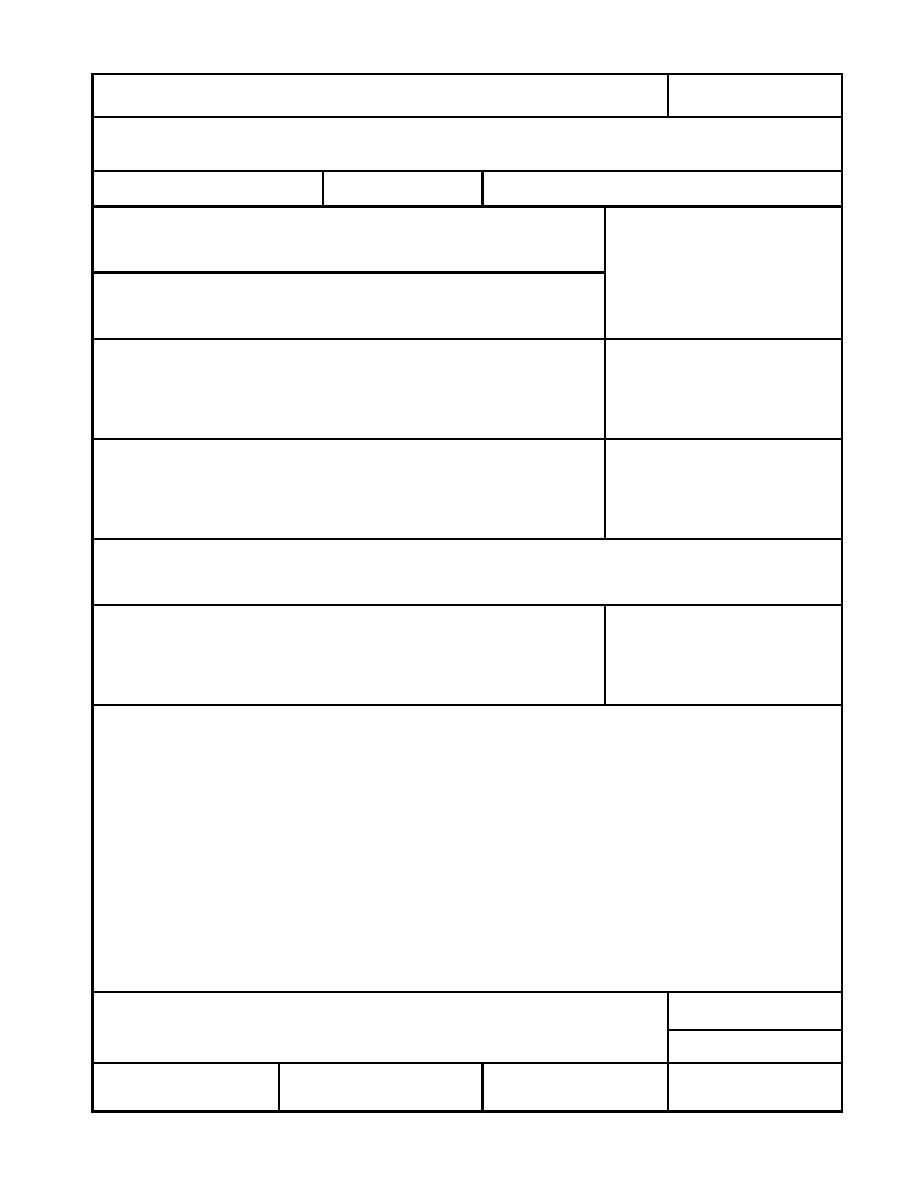 |
||
|
|
||
| |||||||||||||||
|
|
 Form Approved
REPORT DOCUMENTATION PAGE
OMB No. 0704-0188
Public reporting burden for this collection of information is estimated to average 1 hour per response, including the time for reviewing instructions, searching existing data sources, gathering
and maintaining the data needed, and completing and reviewing the collection of information. Send comments regarding this burden estimate or any other aspect of this collection of
information, including suggestions for reducing this burden, to Washington Headquarters Services, Directorate for Information Operations and Reports, 1215 Jefferson Davis Highway, Suite
1204, Arlington, VA 22202-4302, and to the Office of Management and Budget, Paperwork Reduction Project (0704-0188), Washington, DC 20503.
1. AGENCY USE ONLY (Leave blank)
2. REPORT DATE
3. REPORT TYPE AND DATES COVERED
June 1998
Final report
4. TITLE AND SUBTITLE
5. FUNDING NUMBERS
Guidance for Subaqueous Dredged Material Capping
6. AUTHOR(S)
Michael R. Palermo, James E. Clausner, Marian P. Rollings, Gregory L. Williams,
Tommy E. Myers, Thomas J. Fredette, Robert E. Randall
7. PERFORMING ORGANIZATION NAME(S) AND ADDRESS(ES)
8. PERFORMING ORGANIZATION
REPORT NUMBER
See reverse.
Technical Report DOER-1
9. SPONSORING/MONITORING AGENCY NAME(S) AND ADDRESS(ES)
10. SPONSORING/MONITORING
AGENCY REPORT NUMBER
U.S. Army Corps of Engineers
Washington, DC 20314-1000
11. SUPPLEMENTARY NOTES
Available from National Technical Information Service, 5285 Port Royal Road, Springfield, VA 22161.
12a. DISTRIBUTION/AVAILABILITY STATEMENT
12b. DISTRIBUTION CODE
Approved for public release; distribution is unlimited.
13. ABSTRACT (Maximum 200 words)
When dredged materials proposed for open-water placement are found to require isolation form the benthic environ-
ment due to the presence of contaminants, capping may be appropriate for consideration as a management action. This
report is intended to provide technical guidance for evaluation of capping projects. From a technical perspective, this
guidance is applicable to dredged material capping projects in ocean waters as well as inland and near-coastal waters.
Subaqueous dredged material capping is the controlled, accurate placement of contaminated dredged material at an
appropriately selected open-water placement site, followed by a covering or cap of suitable isolating material. A number
of capping operations under a variety of placement conditions have been accomplished. Conventional placement equip-
ment and techniques are frequently used for a capping project, but these practices must be controlled more precisely than
for conventional placement. Level bottom capping (LBC) is defined as the placement of a contaminated material in a
mounded configuration and the subsequent covering of the mound with clean sediment. Contained aquatic disposal is
similar to LBC but with the additional provision of some form of lateral confinement (e.g., placement in natural bottom
depressions, constructed subaqueous pits, or behind subaqueous berms) to minimize spread of the materials on the bottom.
(Continued)
14. SUBJECT TERMS
15. NUMBER OF PAGES
Capping
Dredged material Open-water disposal
302
Contaminated sediments
Dredging
16. PRICE CODE
17. SECURITY CLASSIFICATION
18. SECURITY CLASSIFICATION
19. SECURITY CLASSIFICATION
20. LIMITATION OF ABSTRACT
OF REPORT
OF THIS PAGE
OF ABSTRACT
UNCLASSIFIED
UNCLASSIFIED
NSN 7540-01-280-5500
Standard Form 298 (Rev. 2-89)
Prescribed by ANSI Std. Z39-18
298-102
|
|
Privacy Statement - Press Release - Copyright Information. - Contact Us - Support Integrated Publishing |